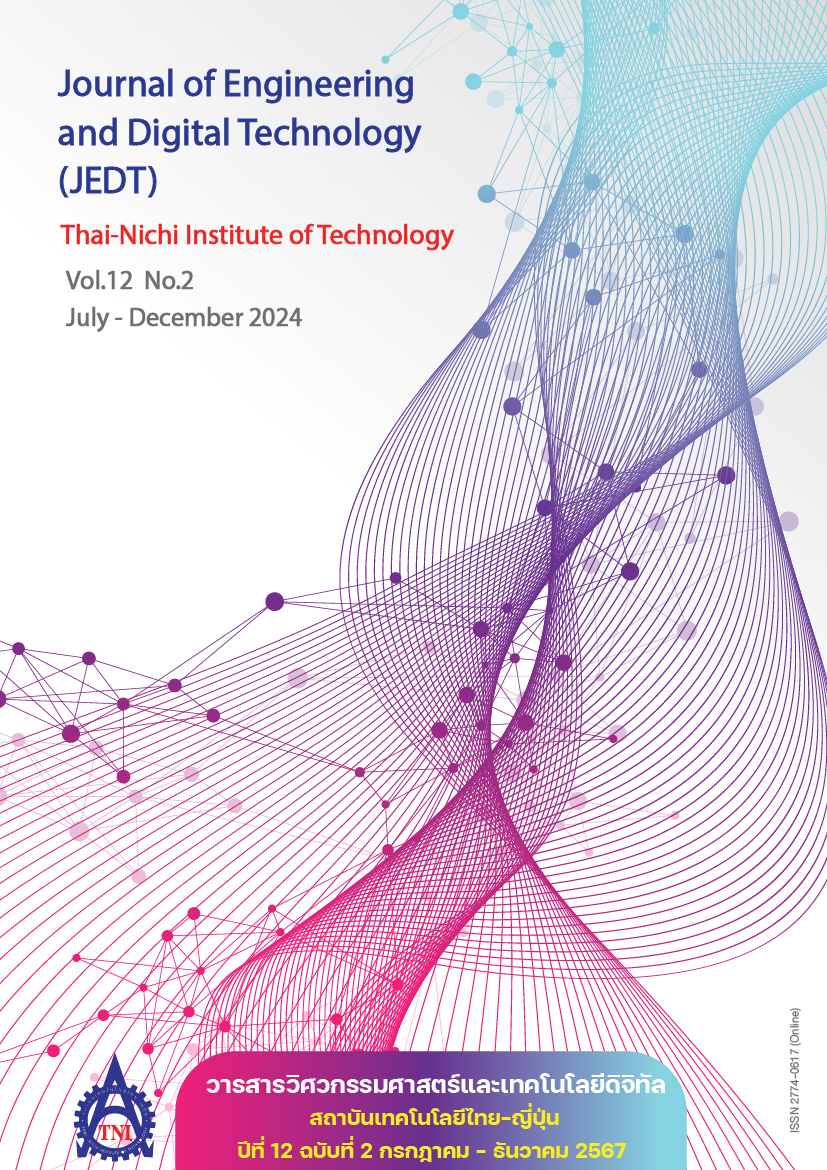Building Information Modeling for Construction Site Layout Planning
Main Article Content
Abstract
The planning of construction site layouts is a critical challenge in construction projects, requiring the allocation of suitable positions for temporary facilities and material storage areas within project boundaries and at appropriate time intervals. Failure to do so can result in significant losses and repercussions. This study aims to develop a construction site layout model by identifying optimal position for tower cranes and construction material storage area that are both feasible and efficient, presented in a format that mirrors reality. The methodology extends beyond merely considering the distance of material movement during construction activities. It aligns time intervals with project scheduling to reduce costs related to crane rental, transportation, storage facilities, material shortages, and opportunity costs. The application of a genetic algorithm is employed to discover the best solutions for positioning tower cranes and storage areas. This approach offers the advantage of approximating the best possible solution and revealing trends in improved solutions. The methodology has been applied to a case study project, illustrating that the development of construction site layouts by identifying optimal positions for tower cranes and construction material storage areas can significantly reduce material movement distances, resulting in reduced time and costs.
Article Details

This work is licensed under a Creative Commons Attribution-NonCommercial-NoDerivatives 4.0 International License.
Article Accepting Policy
The editorial board of Thai-Nichi Institute of Technology is pleased to receive articles from lecturers and experts in the fields of engineering and technology written in Thai or English. The academic work submitted for publication must not be published in any other publication before and must not be under consideration of other journal submissions. Therefore, those interested in participating in the dissemination of work and knowledge can submit their article to the editorial board for further submission to the screening committee to consider publishing in the journal. The articles that can be published include solely research articles. Interested persons can prepare their articles by reviewing recommendations for article authors.
Copyright infringement is solely the responsibility of the author(s) of the article. Articles that have been published must be screened and reviewed for quality from qualified experts approved by the editorial board.
The text that appears within each article published in this research journal is a personal opinion of each author, nothing related to Thai-Nichi Institute of Technology, and other faculty members in the institution in any way. Responsibilities and accuracy for the content of each article are owned by each author. If there is any mistake, each author will be responsible for his/her own article(s).
The editorial board reserves the right not to bring any content, views or comments of articles in the Journal of Thai-Nichi Institute of Technology to publish before receiving permission from the authorized author(s) in writing. The published work is the copyright of the Journal of Thai-Nichi Institute of Technology.
References
H. Zhang and J. Y. Wang, “Particle swarm optimization for construction site unequal-area layout,” J. Constr. Eng. Manag., vol. 134, no. 9, pp. 739–748, 2008.
M. Marzouk and A. Abubakr, “Decision support for tower crane selection with building information models and genetic algorithms,” Autom. Constr., vol. 61, pp. 1–15, 2016.
M. A. Abdelmegid, K. M. Shawki, and H. Abdel-Khalek, “GA optimization model for solving tower crane location problem in construction sites,” Alex. Eng. J., vol. 54, no. 3, pp. 519–526, 2015.
C. M. Tam, T. K. L. Tong, and W. K. W. Chan, “Genetic algorithm for optimizing supply locations around tower crane,” J. Constr. Eng. Manag., vol. 127, no. 4, pp. 315–321, 2001.
M. Al-Hussein, M. A. Niaz, H. Yu, and H. Kim, “Integrating 3D visualization and simulation for tower crane operations on construction sites,” Autom. Constr., vol. 15, no. 5, pp. 554–562, 2006.
K. Alkriz and J. C. Mangin, “A new model for optimizing the location of cranes and construction facilities using genetic algorithms,” in Proc. 21st Annu. ARCOM Conf., London, UK, 2005, pp. 981–991.
C. Huang, C. K. Wong, and C. M. Tam, “Optimization of tower crane and material supply locations in a high-rise building site by mixed-integer linear programming,” Autom. Constr., vol. 20, no. 5, pp. 571–580, 2011.
J. Irizarry and E. P. Karan, “Optimizing location of tower cranes on construction sites through GIS and BIM integration,” J. Inf. Technol. Constr., vol. 17, no. 23, pp. 351–366, 2012.
L.-C. Lien and M.-Y. Cheng, “Particle bee algorithm for tower crane layout with material quantity supply and demand optimization,” Autom. Constr., vol. 45, pp. 25–32, 2014.


